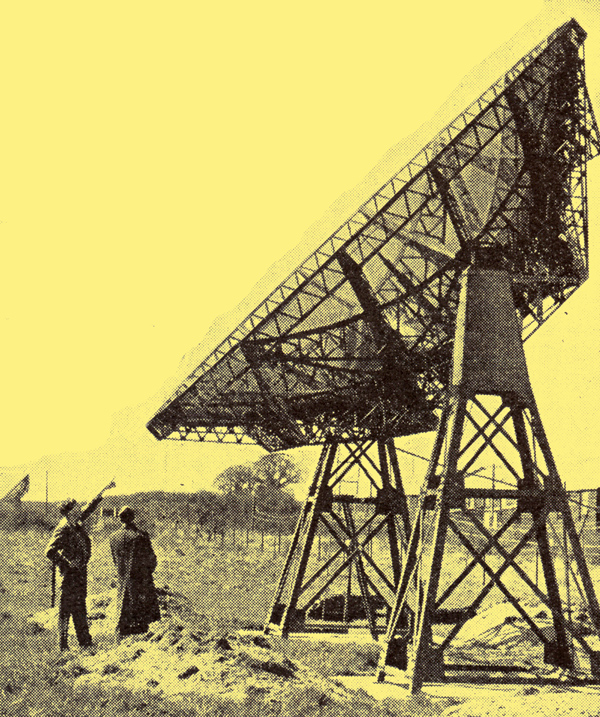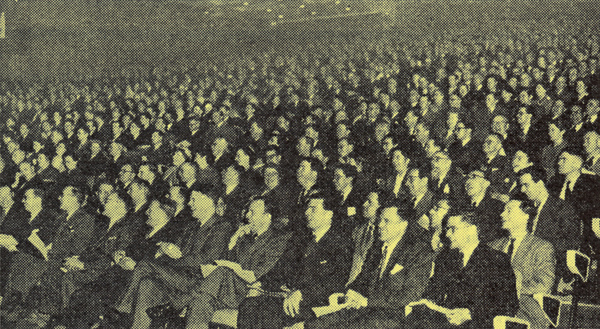|

Radio-astronomy: two spaced paraboloids for producing a multi-lobed interference pattern (Cambridge University)
What amounted virtually to a new use of radio technique was now coming into prominence. As long ago as 1932 it had been known that radio waves were reaching this planet from outer space; in 1948, localised sources of emission, since known as radio stars, had been detected. Now radio astronomy-the use of the so-called radio telescope-was made possible by improved low-noise receiving techniques. The famous Station at Jodrell Bank, with its huge steerable 'dish', had already begun probing into space at distances far beyond the range of optical telescopes.
In brief: Interest in electronic computers began to widen; much discussion on frequency versus amplitude modulation for VHF broadcasting; marked growth of mobile radio telephony, including installations in London taxi-cabs; tape recorders the centre of interest in sound reproduction.

Interest in sound reproduction: G A Briggs (Gilbert Briggs founded Wharfedale speakers) demonstration of comparisons between reproduced and 'live' musical performance filled the Royal Festival Hall, London
|